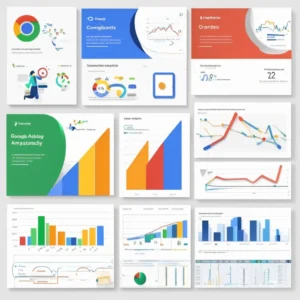Dancing, and defining differences in style is a very fulling practicing of the arts which lets you say something or echo some emotion with choreography. But making dances is easier said than done…conversations about improv, blocking ideas & concepts and trying to flow your moves together so a dance actually MAKES SENSE are harder than they sound.
In this article we will guide you through the steps of creating your concept video from materials and base image selection to different dance techniques, symbolism and scenic direction. No matter if you are already a dancer or just getting started, this guide will help shed light on the world of dance conceptualization.
Gather Your Materials
To craft your own DIY dance clip art, you’ll need to gather the following materials:
Essential Tools
- Pen and paper: The classic tools for sketching and doodling your initial dance concept ideas. Pen and paper allow you to intuitively draw and explore your creative vision.
- Computer: A decent computer capable of handling graphics software and cloud connectivity is essential for digital creatives.
- Stylus and graphics tablet: Tools like the Wacom tablet and Apple Pencil enable you to digitally draw and sketch, combining the traditional feel of pen and paper with modern technology.
- Smartphone: Smartphones provide access to on-the-go drawing and image-editing apps, as well as a camera for capturing unexpected moments.
- Camera: For precise photo and video capture, a DSLR camera from brands like Canon or Nikon is recommended.
Software Recommendations
- Graphic design applications: Adobe Creative Cloud offers a comprehensive suite of applications for creating and manipulating various visual formats, including Photoshop (raster graphics), Illustrator (vector images), After Effects and Premiere Pro (videos), and InDesign (desktop publishing). Alternatives include Affinity Designer, CorelDRAW, Sketch, Vectornator, GIMP, and Inkscape.
- Online graphic design services: Canva, Snappa, and Design Wizard provide user-friendly, drag-and-drop interfaces for creating images, infographics, and presentations. ZillionDesigns offers a free logo creator, while Venngage is a template-based tool for creating professional content like reports and marketing materials.
- Envato Elements: A comprehensive marketplace offering unlimited downloads of design templates, stock photos, graphics, fonts, and more for a flat monthly fee.
Optional Extras
- Color space reference: The Pantone Matching System is the industry standard for ensuring color accuracy in print design.
- Monitor calibrator: Devices like X-Rite’s ColorMunki Smile and Datacolor’s Spyder5EXPRESS help ensure consistent color representation across screens and printed outputs.
- Storage devices: Portable hard drives or solid-state drives (SSDs) with high storage capacity, such as Western Digital’s My Passport or Samsung’s T3 SSD, are useful for backing up large image and video files.
Remember, the tools and software you choose will depend on your specific needs, skill level, and budget. Start with the essentials and gradually expand your toolkit as your dance clip art projects evolve.
Choosing and Preparing Your Dance Clip Art
To craft a compelling dance clip art, selecting and preparing the right base image is crucial. Here’s how we can approach this step:
Selecting a Suitable Image
When choosing a base image, consider the following factors:
- Subject Matter: The image should align with the dance concept you want to convey. Look for photos or illustrations featuring dancers in relevant poses, costumes, or settings that resonate with your artistic vision.
- Image Quality: Opt for high-resolution images with minimal noise or graininess. This will ensure that your final clip art looks crisp and professional.
- Composition: Pay attention to the framing, aspect ratio, and overall composition of the image. A well-composed shot can enhance the visual impact of your clip art.
- Licensing: If using stock images, ensure you have the appropriate license or permission to modify and repurpose the image for your project.
Editing Your Image
Once you’ve selected your base image, it’s time to prepare it for the dance clip art creation process. Here are some common editing steps:
- Cropping and Straightening: Crop the image to focus on the essential elements and remove any distracting backgrounds or unwanted objects. Use the rotation tool to straighten the horizon or align any tilted elements.
- Adjusting Colors and Contrast: Tweak the color balance, saturation, and contrast to enhance the image’s vibrancy or create a specific mood. However, be cautious not to over-edit and lose important details.
- Noise Reduction: If the image has visible noise or graininess, use noise reduction filters or plugins to smooth out the imperfections while preserving important details like hair or textures.
- Removing Unwanted Elements: Use tools like the clone stamp, healing brush, or content-aware fill to remove any remaining unwanted objects or distractions from the image.
- Saving as a Transparent File: Once you’ve made the necessary edits, save the image as a PNG file with a transparent background. This will allow you to seamlessly integrate the clip art into various design projects.
By carefully selecting and preparing your base image, you’ll have a solid foundation for creating visually striking and conceptually rich dance clip art.
Creating the Clip Art
With your base image prepared, it’s time to transform it into a visually striking dance clip art. This process involves tracing the image, refining the tracings, and adding colors and details to bring your artistic vision to life.
Tracing the Image
One of the most effective ways to convert an image into a vector-based dance clip art is through image tracing. Most graphic design software, such as Adobe Illustrator, Inkscape, and CorelDRAW, offers built-in image tracing tools that can automatically trace your base image. Image Trace does a pretty good job for the most part, particularly with clean line work from sketches brought in.
Open your base in the tracing software of choice, and set up the image tracing option. Start with this… Try different presets and settings corresponding to the amount of detail you wish for. Clean line work is going to have an easier time so if you can output that ultimately good for you. In fact, there are a number of other methods for preparing Photoshop to use Live Trace.
There are a bunch of them, I literally have an entire long lesson on this in my full course but actually could not recall them atm. I am going to have to watch the videos. Rather than using the Filter Gallery, which you can also use some filters are kind of fun and neat to play with it just gives a little bit more of a tweak ability to deal with contrast.
Refining Your Tracings
While image tracing tools can produce decent initial results, manual refinement is often necessary to achieve polished and accurate dance clip art. Here are some tips for refining your tracings:
- Adjust Contrast and Details: You can see that we’ve increased the contrast quite a lot. I don’t know how much of that detail I’m going to be able to save. I don’t know, I could play around with the mid-tones and just try and bring some of it back in.
- Clean Up Stray Points and Lines: Use the node editing tools to remove any stray points or unwanted lines that may have been introduced during the tracing process.
- Smooth Curves and Shapes: Adjust the bezier curves and anchor points to smooth out any jagged or uneven lines, ensuring a clean and polished look.
- Simplify Complex Areas: In areas with intricate details or textures, consider simplifying the tracings to maintain a consistent level of detail throughout the clip art.
Just so you remember, we need a smooth vectorized version of our base image while keeping in mind the important aspects and details that communicate your idea for dance. Everything depends sometimes on projects.
I mean you can actually get a pretty nice result with just an image Trace. Because I don’t work on loads of projects in the same way now, it’s not something that I really ever use any longer (half a dozen fonts for everything!) but back when I was working for that little design company and turning out rather quite a lot of stuff reasonably quickly..
Adding Colors and Details
With your refined tracings in place, it’s time to breathe life into your clip art by adding colors and details that capture the essence of your dance concept.
- Color Selection: Carefully choose a color palette that complements your dance concept and evokes the desired mood or emotion. Consider using colors that represent specific dance styles, cultural influences, or symbolic meanings.
- Shading and Highlights: Incorporate shading and highlights to add depth and dimension to your clip art. This can be achieved through the use of gradients, blending modes, or layering techniques.
- Textures and Patterns: Explore the use of textures and patterns to add visual interest and complexity to your clip art. These elements can be used to represent costumes, backdrops, or other design elements related to your dance concept.
- Symbolism and Iconography: Incorporate symbolic elements or iconography that resonate with your dance concept. These could be cultural motifs, abstract shapes, or stylized representations of dance movements or themes.
Throughout the process, continuously evaluate your clip art’s visual impact and ensure that it effectively communicates your intended dance concept. Don’t be afraid to experiment and iterate until you achieve a result that truly captures your artistic vision.
Finalizing and Saving Your Dance Clip Art
Once you’ve meticulously crafted your dance clip art, it’s time to finalize and save it for future use or sharing. Here are the key steps to follow:
Grouping Elements
Grouping related elements in your clip art is essential for maintaining its integrity and facilitating easy editing or manipulation. Most graphic design software offers grouping and ungrouping features to combine or separate various components.
- Grouping: To group multiple elements together, select them and use the “Group” command, typically found under the “Object” menu. This combines the selected pieces into a single, editable unit.
- Ungrouping: If you need to modify individual components within a grouped object, use the “Ungroup” command to separate them. This allows you to access and edit specific parts of the clip art.
By strategically grouping and ungrouping elements, you can maintain control over the entire clip art while still having the flexibility to refine specific details as needed.
Exporting as PNG or SVG
After finalizing your dance clip art, it’s crucial to export it in a format suitable for various applications and platforms. Two widely used and recommended formats are PNG and SVG:
- PNG (Portable Network Graphics): PNG is a raster image format that supports transparency, making it ideal for integrating clip art into designs or websites with different backgrounds. To export as a PNG, simply save or export your file from your graphic design software with the PNG option selected.
- SVG (Scalable Vector Graphics): SVG is a vector-based format that preserves the quality and crispness of your clip art, regardless of the scale or resolution. It’s particularly useful for print projects, large-scale displays, or situations where you need to resize the clip art without compromising its sharpness. To export as an SVG, follow these steps:
- Select the vector layer(s) containing your dance clip art.
- Choose the “Export” or “Save As” option in your software.
- Select the SVG file format and specify any desired export settings.
- Click “Export” or “Save” to generate the SVG file.
By exporting your dance clip art in both PNG and SVG formats, you’ll have versatile files that can be seamlessly integrated into various design projects, presentations, or digital platforms, ensuring your artistic vision remains intact and visually striking.
Remember, the process of finalizing and saving your dance clip art is crucial for preserving your hard work and ensuring its longevity and versatility across different mediums and applications.
Conclusion
Creating your DIY dance clip art is a fulfilling, artistic adventure that requires imagination and technical expertise along with good old-fashioned gumption. Step-by-step instructions are given here so a simple image can be converted into an impactful dance clip art that will relay the idea of your science efficiently through images. Each part of the process from selecting materials and base images, to tracing your design, shading in details, and refining lines all contribute together harmoniously to achieve a true work of art.
While you keep on learning and improving your dance clip artwork, just make sure to approach everything with an open mind, be real in yourself as an artist of this medium & always look for ways how better do the techniques. Dance design is a practice and it’s an ability as well, believe me just when I started this art form, it was kind of very new to think about the deepness in dance, I always thought that creating steps part should be rather spontaneous). But by refining my skills you can make breathtaking results that are understandable for people who watch your dance performance.
FAQs
1. How can I develop my unique dance style?
To develop a unique dance style, start by exploring the type of music you enjoy and imagine how you would move if you had never seen any dance before. Begin to structure your movements into a routine, creating a blend that reflects your flair. Embrace what makes you unique, draw inspiration from your surroundings, understand yourself deeply, and always remain open to learning.
2. What are some tips for creating my dance choreography?
When choreographing a dance, aim to convey the story of the music through your movements. Continuously practice and innovate with new steps, and learn from any mistakes. Challenge yourself by incorporating different rhythms, styles, and techniques. Start by planning the key elements of your choreography and then build additional steps around them to enhance the overall performance.
3. How can I film a dance video on my own?
To film a dance video yourself, position your camera with its back facing a window to ensure good lighting. Always shoot in landscape mode rather than vertically. Place the music source close to the camera or phone to improve sound quality and avoid echo. Be aware of the frame’s boundaries and stabilize your phone using simple support like a coffee mug for a steady shot.
4. What defines dance as an art form?
Dance is a performing art characterized by sequences of movements that can be improvised or meticulously planned. These movements are not only aesthetically pleasing but often carry symbolic significance. Dance is defined by its choreography, and the repertoire of movements it includes, and it can also be categorized by its historical period or geographical origin.








